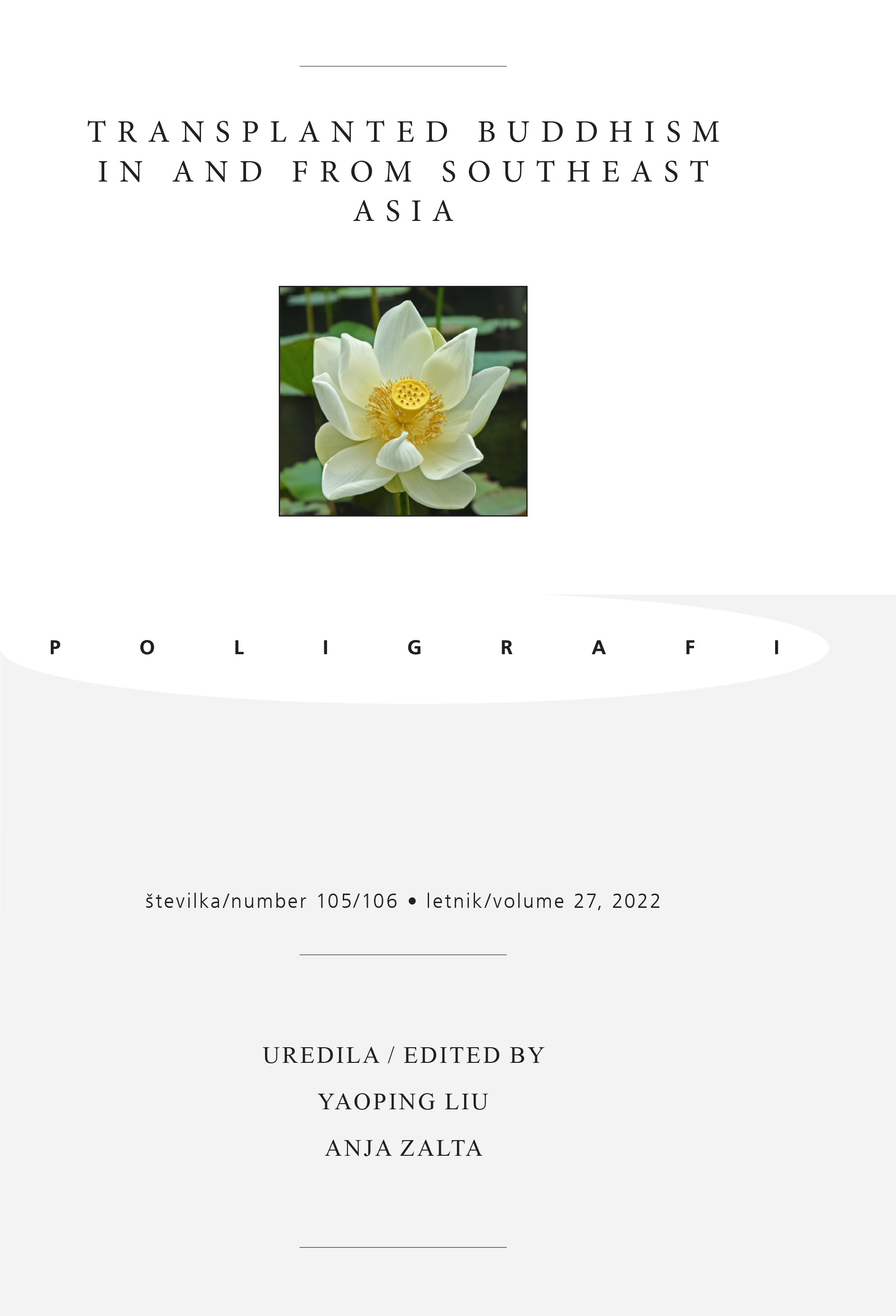A case study on the Consecration of Space at Mahidol University Salaya Campus
DOI:
https://doi.org/10.35469/poligrafi.2022.333Keywords:
profane, religion, sacred, spirit, ThailandAbstract
This article presents the phenomenon of religious revival in the twentieth century through a case study of phenomenology at Mahidol University Salaya campus, Thailand. The principal scope of this study is on the socio-religious construct of the contemporary Buddhist community at Mahidol University Salaya campus. The revival of religion at the university has transformed the campus into a religious space that juxtapositions its secular academic framework.
References
Charoensook, Sugree, and Phonphit Amataykullah. ความเชื่อเรื่องเจ้าที่ในพื้นที่มหาวิทยาลัยมหิดล ณ ศาลายา เจ้าขุ่นทุ่ง. Nakorn Prathom: College of Music, Mahidol University, 2009.
Dabphet, Siriporn. “State and Religious Ideology in Nineteenth-Century Thailand.” Journal of the Siam Society (1990): 53-61.
Durkheim, Emile. The Elementary Form of Religious Life. London: The Free Press, 1965.
Eliade, Mircea. The Sacred And The Profane. San Diego: A Harvest Book, 1959.
Fox, Jonathan. Political Secularism, Religion, and the State. New York: Cambridge University Press, 2015.
Gorski, Philip, David Kyuman Kim, John Torpey, and Jonathan VanAntwerpen. The Post-Secular in Question: Religion in Contemporary Society. New York: New York University Press, 2012.
Hall, Kenneth R. A History of Early Southeast Asia: Maritime Trade and State Development, 100-150. Plymouth: Rowman&Littlefield Publishers, INC, 2011.
Hendrix, Scott E. “Superstition and modernity: The conflict thesis, secularization thesis, and anti-Catholicism.” In Religion in the Era of Postsecularism, edited by Uchenna Okeja, 103–122. London: Routledge, 2019.
Holt, John Clifford. Spirits of the Place Buddhism and Lao Religious Culture. Honolulu: University of Hawaii Press, 2009.
Huntington, Samuel P. The Clash of Civilizations and the Remaking of World Order. New York: Simon & Schuster Paperbacks, 2003.
Jackson, Peter A. “Virtual Divinity: A 21st-Century Discourse of Thai Royal Influence.” In Saying the Unsayable: Monarchy and Democracy in Thailand, edited by Soren Ivarsson and Lotte Soren, 29–60. Singapore: NiAS Press, 2010.
Jacobs, Norman. Modernization Without Development: Thailand as an Asian Cases Study . New York: Praeger Publisheers, 1971.
Kasemphonkul, Apilluck. Retelling the legend of Salaya. Nakorn Pratthom: Liberal Arts, Mahidol University, 2009.
Kitiarsa, Pattana. Mediums, Monks, & Amulets: Thai Popular Buddhism Today. Chiang Mai: Silkworm Books, 2012.
Kosuta, Matthew. “King Naresuan’s Victory in Elephant Duel: A Tale of Two Monuments.” Journal of Social Issues in Southeast Asia 34, no. 3 (2019): 578–606. https://doi.org/10.1355/sj34-3d.
Paden, William E. New Patterns for Comparative Religion: Passages to an Evolutionary Perspective. New York: Bloomsbury Publishing, 2016.
Sattayanurak, Attachak. “The Intellectual Aspects of Strong Kingship In the Late Nineteenth-Century.” Journal of the Siam Society 88, no. 1&2 (2000): 72–95.
Taylor, Charles. A Secular Age. Cambridge: Harvard University Press, 2007.
Taylor, James. Buddhism and Post Modern Imaginings in Thailand: The Religiosity of Urban Space. Surrey: Routledge, 2008.
Winichakul, Thongchai. “The Quest for ‘Siwilai’: A Geographical Discourse of Civilizational Thinking in the Late Nineteenth and Early Twentieth-Century Siam.” Journal of Asian Studies 59, no. 3 (2000): 533–539. https://doi.org/10.1017/S0021911800014327.


